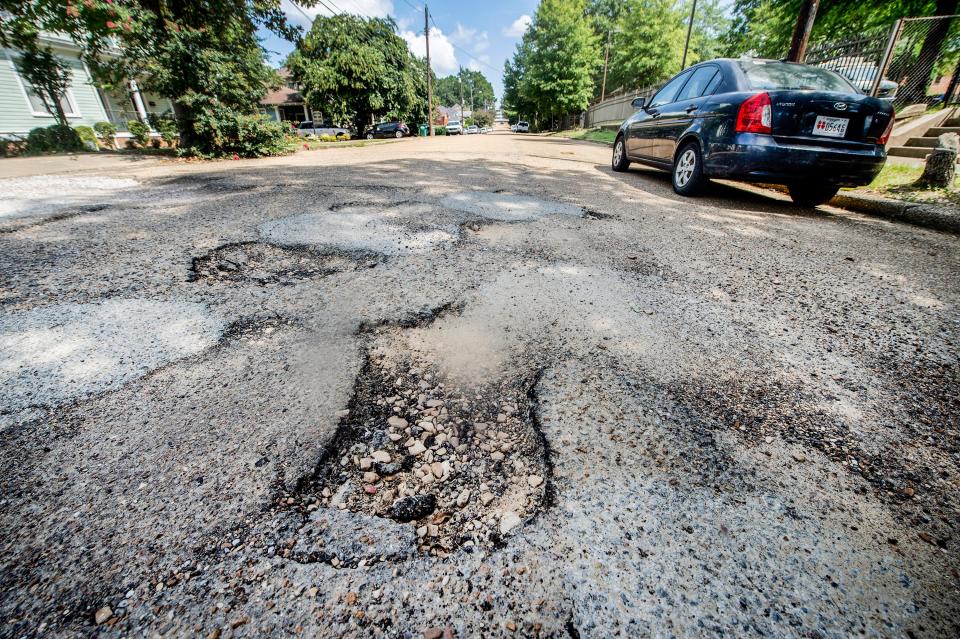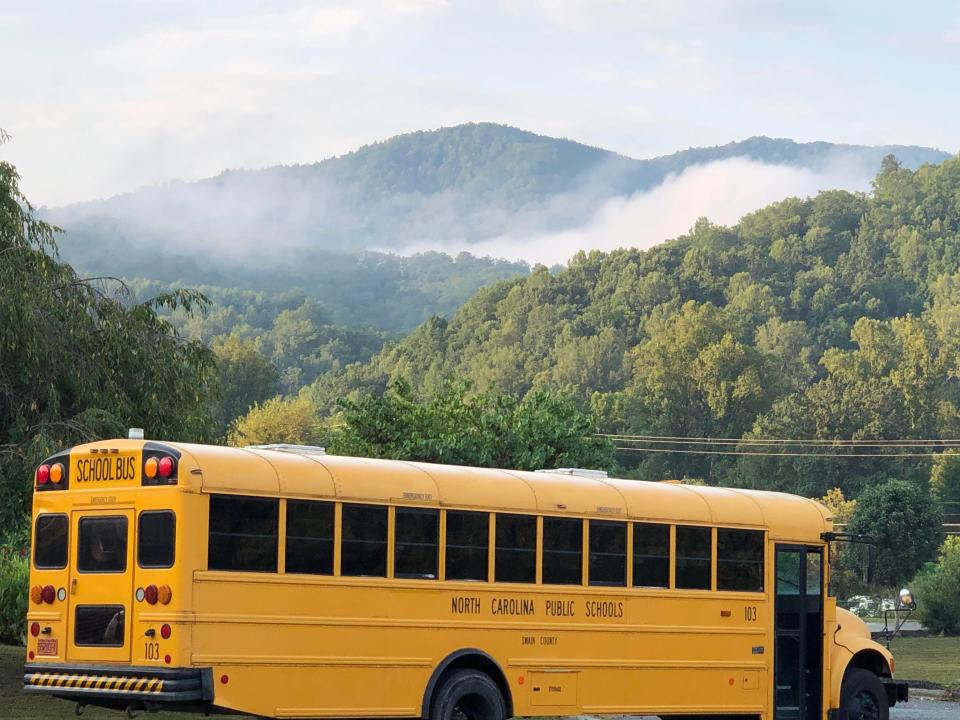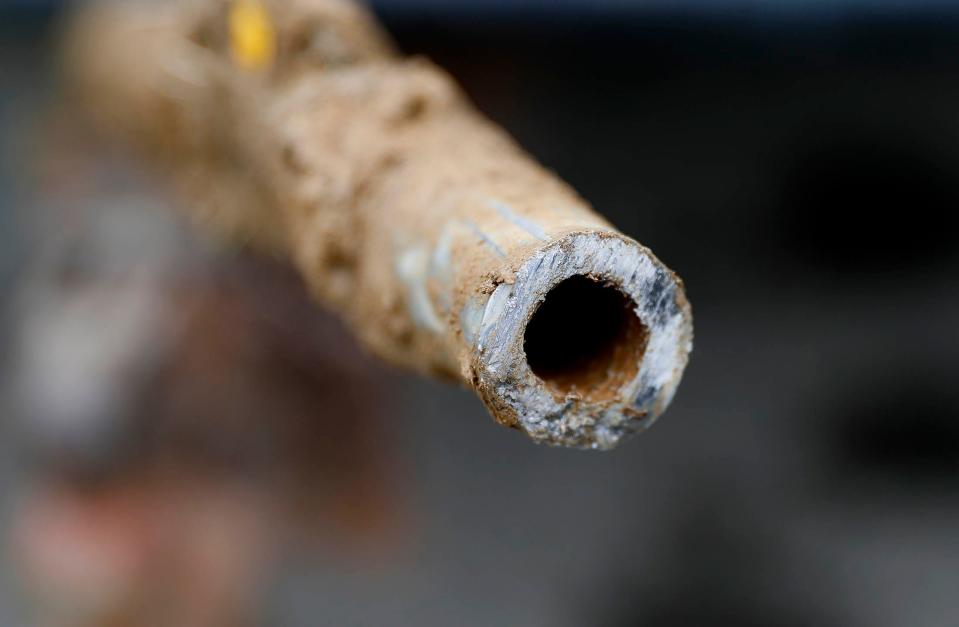Will it transform NC? What's in Biden's massive infrastructure bill for the Tar Heel State
- Oops!Something went wrong.Please try again later.
North Carolina’s nickname as the “Good Roads State” harks back more than a century to when it became a grassroots rallying cry to promote the building and maintenance of a state-maintained road network, which in the early 20th century lagged behind much of the rest of the nation.
But with more than 3,000 miles of highways and nearly 1,450 bridges currently classified as in “poor” condition, there are 7.6 million or so North Carolina drivers who might argue the state has veered a little off course in living up to the moniker.
Infrastructure: After 91 years, this Wilmington bridge over Smith Creek will soon be demolished
State officials hope President Biden’s $1.2-trillion Infrastructure Investment and Jobs Act, which the president plans to sign Monday, will help smooth out many of those rough spots and provide a jolt to North Carolina’s economy. With significant investments planned in new electric car charging stations and extending high-speed internet to rural areas, they also hope it lays a path toward a greener and high tech future for the Tar Heel State.
All together, the bill includes nearly $9 billion for a host of North Carolina infrastructure projects and access to competitive federal grant programs for billions more.
But with all that demand for new and upgraded infrastructure coming down the pike, does North Carolina have the human and contracting resources to pave all the roads, build all the new bridges, and lay all the pipes and new wiring the bill is intended to fund?
Dave Simpson, president and CEO of Carolinas AGC (Associated General Contractors), believes the huge investment being made will draw labor to meet the demand.
“We are optimistic that the funding will help attract more people into great careers in the construction industry in North and South Carolina, whether it be highway-heavy building or utility work," he said, also noting the importance of the vote of confidence the bill's guaranteed revenue stream will give to contractors.
Here are some highlights of what the massive new bill, which is the largest financial injection into the nation's infrastructure since the Eisenhower years and the building of the interstate system, means for North Carolina:
Paving away the problems

The infrastructure bill is expected to send $7.2 billion to North Carolina for highways over the next five years and $457 million for bridge replacement and repairs, according to a fact sheet provided by the office of Democratic U.S. Rep. Deborah Ross of Raleigh.
By law, North Carolina uses a data-driven formula and process to decide when individual roads are built or improved.
“Funds from the Infrastructure Investment and Jobs Act will help us delay fewer projects due to the incredible inflation we have seen impacting material, right of way and labor costs,” said Carly Olexik, spokeswoman for the N.C. Department of Transportation.
The bill is anticipated to send $910 million to North Carolina over five years to improve public transportation. “We’ve got to invest in buses, commuter rail and other modes of transit that cut emissions and improve economic opportunity for people who have traditionally not had access to public transit,” Democratic U.S. Rep. David Price of Chapel Hill said during a news conference Monday.

The state also would receive $460 million to improve the state’s airports, the fact sheet says. The airports that benefit could include Raleigh-Durham International Airport, Price said, because the airport is expected to need a new runway in the near future.
Getting greener through electric cars
Electric vehicles still don't have the range to make it from one side of North Carolina to the other on a single charge.
While trips from Murphy to Manteo are rare, traveling outside the state's major metro areas are not. The problem is most of the state's charging stations are in just a handful of urban counties — where most of the state's EVs are also located.
Going electric: An electric car in every North Carolina garage? A bill could make that a little easier
As of the end of December, there were just over 24,000 registered electric vehicles and plug-in hybrids in North Carolina, with Wake, Mecklenburg, Durham, Orange and Buncombe counties rounding out the Top 5, according to the N.C. Department of Transportation. EV sales in the fourth quarter of 2020 accounted for about 11% of all the vehicle's sold in the state.

State officials are hoping to change that with the $109 million over the next five years included in the new infrastructure bill for building out North Carolina's network of charging stations. The legislation also opens the door for the state to apply for billions more in grant funding to further expand the network.
As she topped up her electric SUV at one of the charging stations in Wilmington's downtown public parking garage, Jenny Jackson admitted to having some "range anxiety" on long trips.
"It would be nice to have more charging options when you're traveling, because you really don't want that insecurity on top of everything else," she said.
Green energy: North Carolina wants to pivot to a green energy grid, getting there could be a bumpy ride
Both President Biden and Gov. Roy Cooper have made getting more electric vehicles on the road a centerpiece of their strategies to reduce greenhouse gas emissions.
The infrastructure bill also earmarks money for North Carolina to help better handle extreme weather events, like wildfires, and expand home weatherization efforts to reduce energy consumption and costs for consumers.
You've got mail!
North Carolina will get a sizable slice of the $65 billion the bill allots for broadband expansion.
When all the dollars are tallied, the North Carolina Department of Information Technology anticipates the state receiving close to $1 billion to enhance internet access.
The state estimates 1.1 million North Carolinians currently lack access to the internet due to not having connections, not being able to afford it, or not knowing how to utilize it. The bill, NCDIT deputy secretary Nate Denny said, “will help us close the digital divide across all areas of the state.”

A 2011 state law, backed by some internet providers, forbids local governments from establishing broadband infrastructure, so the federal money will mainly go toward public-private partnerships.
One region that will welcome extra connectivity is rural Western North Carolina, where the mountainous terrains make it more difficult and less profitable for internet providers to offer services, especially over what's known in the industry as "last-mile" services.
Bill Sederburg, chair of the WNC Broadband Project, said the federal dollars will help run fiber internet cables to more corners of the region. The funding, he added, will also give local officials the resources to more adequately map low-connectivity areas, which local governments can then use to apply for more broadband grants in the future.
“It’s going to make a huge impact for broadband in the state of North Carolina, Sederburg said. “And it will be a very significant benefit here locally.”
Get the lead out
For a century, lead was a go-to in plumbing due to its durability and malleability, according to a report in The Los Angeles Times — despite increasing evidence that it caused brain damage in children. Up to 10 million households and 400,000 schools and childcare centers might not have safe drinking water, the Biden administration estimates. As part of the infrastructure bill, North Carolina will receive $1.1 billion over five years to tackle its part of the problem.
How many lead water lines are left, and where are they? That remains to be seen. The N.C. Department of Environmental Quality does not maintain a list, though it expects to compile one in the future, spokeswoman Cathy Akroyd said.
Clean Water for Carolina Kids has tested the taps of almost every licensed child care center in the state. Ninety-three percent had detectable levels of lead in their water, director Jennifer Hoponick Redmon said — and there’s no level of lead that’s considered safe for children.
“It’s definitely a really necessary step,” Redmon said of the new infrastructure funding. Homeowners usually can’t afford the costly project of replacing water lines, “so the problem of lead exposure continues because there’s not the necessary financial support.”

That said, replacing municipal lines isn’t enough, Redmon said. Most of the centers’ toxicity came from faucets and other indoor plumbing.
If you want to check your house’s water line, find where it enters the house, Redmon said. If a magnet won’t stick to the pipe and it’s silver-colored, it might be lead.
Reporters Paul Woolverton, Brian Gordon and Danielle Dreilinger contributed to this story.
Reporter Gareth McGrath can be reached at GMcGrath@Gannett.com or @GarethMcGrathSN on Twitter. This story was produced with financial support from 1Earth Fund and the Prentice Foundation. The USA TODAY Network maintains full editorial control of the work.
This article originally appeared on Wilmington StarNews: How will Biden's infrastructure bill help North Carolina's roads?

